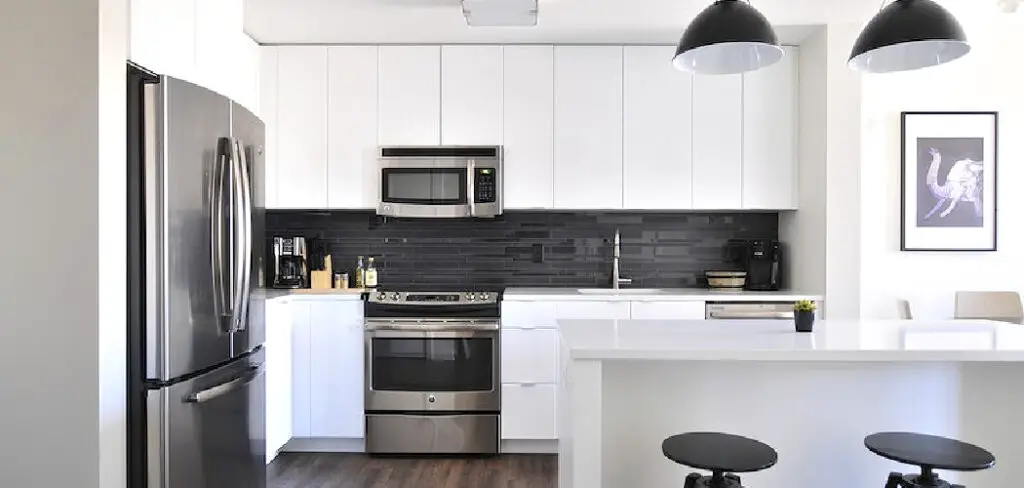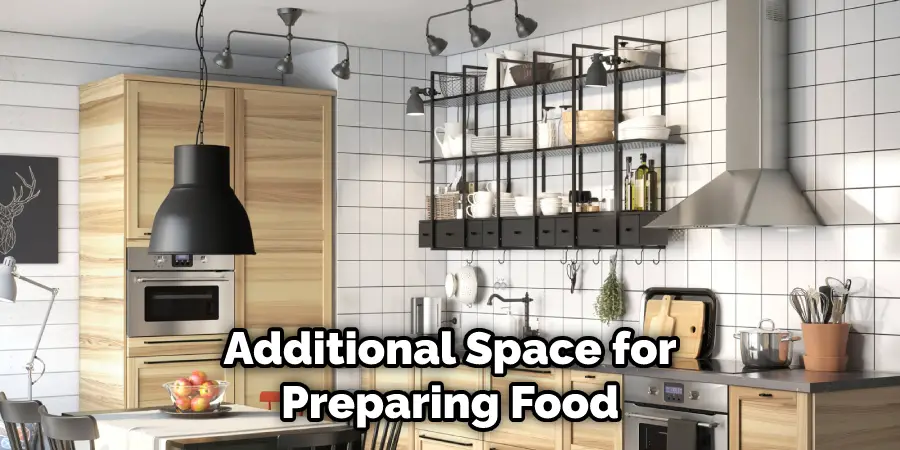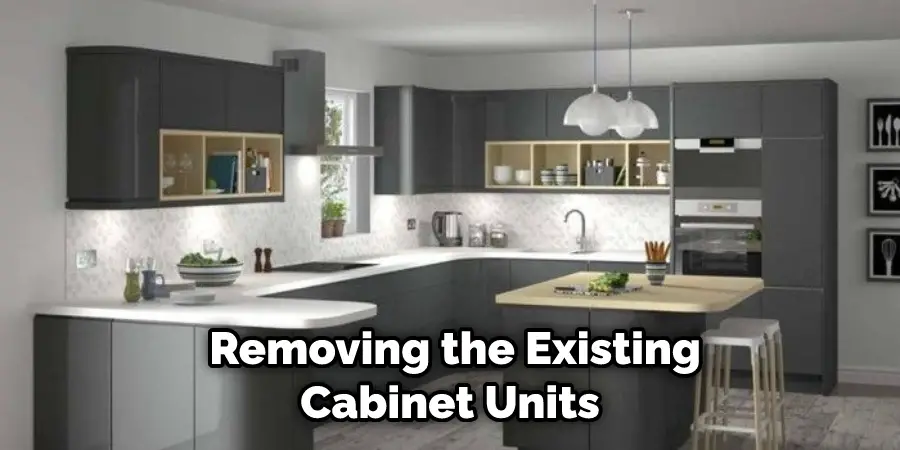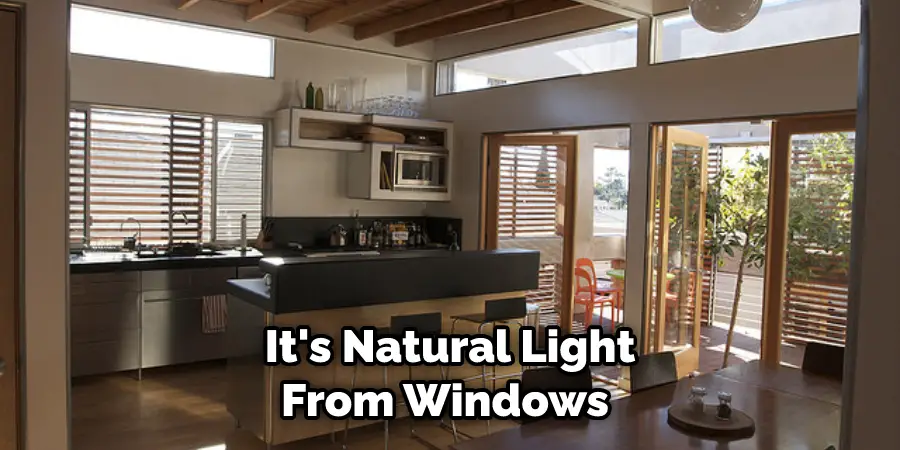Do you want to give your kitchen a fresh new look? While it can be quite daunting to undertake such a task, there are resources available to help guide you through every step of the process. In this blog post, we’ll explore how to successfully reconfigure your kitchen and make it into something special that both looks great and functions well for all your needs. We’ll provide tips on planning out the new design, the materials needed for implementation, as well as a number of other considerations — read on if you’re ready to complete an impressive renovation project!

If you’re looking to change up the layout of your kitchen, reconfiguring it can be a great way to give your space an entirely new look. But where do you start? When it comes to reconfiguring a kitchen, there are many things that need to be considered in order to ensure success. Here, we’ll unpack how you can create an efficient and attractive new configuration for your kitchen — from developing a plan and exploring viable options through managing the installation process with professionals. Read on for our ultimate guide on how to reconfigure a kitchen!
Why May You Want to Reconfigure a Kitchen?
There can be many reasons why you may want to reconfigure your kitchen. Such as:
1. To Get More Storage Space
If you are lacking in storage space and feel like your kitchen is too cramped, reconfiguring your kitchen can help to give you more room for storing things. It will also help to make your kitchen look less cluttered and more organized.
2. To Better Utilize Your Space
If you feel like your current layout is not making the best use of your available space, reconfiguring your kitchen can help to better utilize that space. This can make it easier to move around in your kitchen and help to create a more functional workspace.
3. To Create More Room for Entertaining
If you often host guests or have large family gatherings, reconfiguring your kitchen can give you additional space for preparing food and entertaining your guests. This can help make the experience more enjoyable for everyone involved and ensure that your kitchen is always ready for large gatherings.

Overall, if you are looking to make your kitchen more functional or better suited to your needs, reconfiguring it may be the right choice for you. With a little bit of effort and some planning, you can create the perfect space that meets all of your cooking and entertaining needs. So why wait? Reconfigure your kitchen today and start enjoying the benefits!
How to Reconfigure a Kitchen in 10 Easy Steps
Step 1: Consider Desired Layout and Design
When reconfiguring a kitchen, it is important to carefully consider the desired layout and design that you want to achieve. This may involve consulting with a designer or contractor to help you map out the best possible configuration for your space.
Step 2: Prioritize Skills and Tools
To successfully reconfigure a kitchen, it is important to have the necessary skills and tools at your disposal. This may involve enlisting the help of friends or family members who have experience working with home renovation projects. Additionally, you may need to invest in certain specialized tools that will make the process easier, such as a power saw or a power drill.
Step 3: Plan for Electrical and Plumbing Work
When reconfiguring a kitchen, it is important to take into account any necessary electrical or plumbing work that may need to be done. This involve working with an electrician and/or plumber, who can help you identify the best course of action and ensure that the work is carried out safely and properly.
Step 4: Remove Existing Cabinetry
Once you have a plan in place, the first step in reconfiguring your kitchen will typically involve removing the existing cabinet units. This can be done by carefully dismantling each piece, or by having a professional come in to do the work for you.

Step 5: Reinstall New Cabinetry
After the existing units have been removed, the next step will typically involve reinstalling your new kitchen cabinets. This can be done by yourself or with the help of a contractor, and should involve properly leveling and securing each unit in place.
Step 6:Add Finishing Touches
Once your new kitchen cabinets have been installed, there may still be some additional work that needs to be done. This could involve installing countertops, backsplashes, or other finishing touches that will help give your kitchen a polished and professional look.
Step 7: Organize Your Kitchen Space
One of the most important steps in reconfiguring a kitchen is to ensure that all of your items are properly organized and stored. This may involve investing in new organizers or storage solutions, or simply making use of the space you already have more efficiently.
Step 8: Consider Adding a Kitchen Island
Another way to reconfigure your kitchen is by adding a kitchen island. This can help create additional prep space, provide additional storage options, and even double as a breakfast bar or dining area.
Step 9: Purchase New Appliances
If you are looking to completely revamp your kitchen, one of the best ways to do so is by purchasing new appliances. This may involve investing in state-of-the-art cooking tools, sleek new refrigerators and freezers, or even energy-efficient dishwashers and microwaves.
Step 10: Get Creative with Lighting
Finally, when reconfiguring your kitchen, it is also important to consider the lighting. This may involve switching out your current light fixtures for newer models, installing under-cabinet lighting for better visibility, or even incorporating more natural light with the help of large windows or skylights.

With these steps, you can successfully reconfigure your kitchen and start enjoying all of the benefits today!
Some Additional Tips to Reconfigure a Kitchen
1. Avoid Overcrowding
One of the most important things to consider when reconfiguring your kitchen is to avoid overcrowding. This can make your kitchen feel cluttered and disorganized, which can be a big hassle when you’re trying to get cooking or cleaning done.
2. Prioritize Storage
When performing a kitchen reconfiguration, it’s also important to prioritize storage, as this can be a key factor in the success of your project. Consider adding additional shelves, cabinets, and drawers to help maximize the space and keep everything organized.
3. Don’t Forget About Lighting
Finally, don’t forget about lighting when you’re reconfiguring your kitchen. You’ll want to make sure that you have plenty of light sources in every area of your kitchen, whether it’s natural light from windows or artificial lighting from lamps and overhead fixtures.
4. Use Color to Your Advantage
Using color can also be a great way to increase the visual appeal and functionality of your kitchen. Try incorporating pops of bright, bold colors into your design, such as an accent wall or some fun kitchen accessories, for a modern and stylish look that is sure to impress.

By following these simple tips, you can easily reconfigure your kitchen and create a space that you’ll love spending time in.
Conclusion
Now that you know how to reconfigure a kitchen, the important thing is to get started. Come up with a plan and then stick to it. Don’t forget to focus on the key points: layout, appliances, and storage. With these things in mind, you’ll be well on your way to creating the kitchen of your dreams.
By following the steps above, you can easily reconfigure your kitchen to make it more efficient and better suited to your needs. With a little bit of planning, you can create a space that is both stylish and functional. So what are you waiting for? Get started today!
Professional Focus
Angela Ervin, a former interior designer turned blogger, specializes in kitchen design and renovations. Through her website, she blends her passion for cooking with design expertise, sharing practical and creative ideas. Known for balancing functionality and beauty, Angela’s insightful content has made her a trusted voice in home design and lifestyle.
About the Author
Angela Ervin, an experienced interior designer and blogger, combines her passion for kitchen renovations with storytelling. Living in Petersburg with her family, she enjoys cooking and testing her projects firsthand. Known for her humor and relatable style, Angela shares creative, functional design insights through her content, making her a trusted voice in home design.
Education History
University: Virginia Commonwealth University
Degree: Bachelor of Fine Arts (BFA) in Interior Design
- Angela’s education at VCU focused on mastering core interior design principles, including spatial planning, color theory, materials selection, and sustainable design practices.
- She gained hands-on experience through studio projects and collaborative design exercises, which honed her ability to create functional and aesthetically pleasing environments.
- Her coursework also emphasized problem-solving and practical applications of design, preparing her for real-world projects like her self-directed kitchen renovations.
- The program’s strong foundation in both technical skills and creative expression shaped Angela’s ability to seamlessly integrate form and function in her work.


